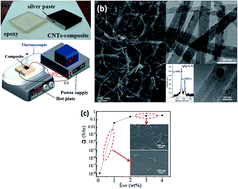A carbon nanotube–epoxy interface improved damping below the glass transition temperature†
Abstract
Composites made from fibers and epoxy display a low viscous drag and are rarely used as mechanical dampers at room temperature. Incorporation of carbon nanotubes into epoxy promotes interfaces that govern the damping mechanism in the vicinity of the glass transition temperature. The damping character remains unchanged as glass fibers are also present in the composites and the damping coefficient is measured to be 0.1.


 Please wait while we load your content...
Please wait while we load your content...